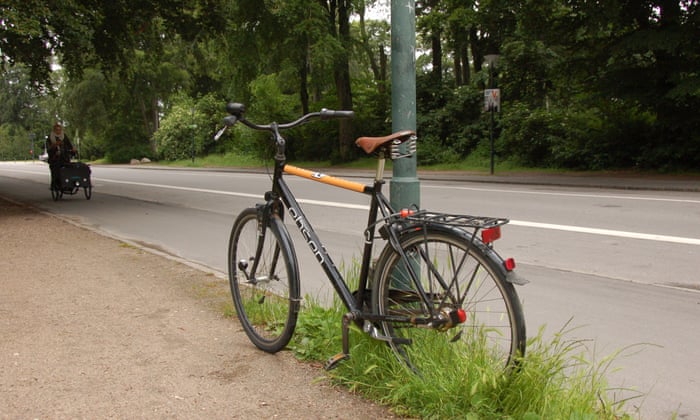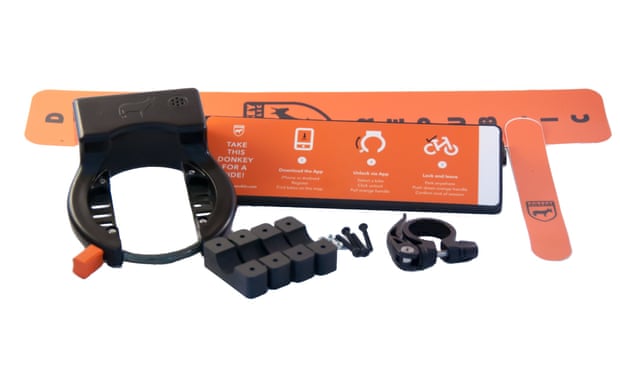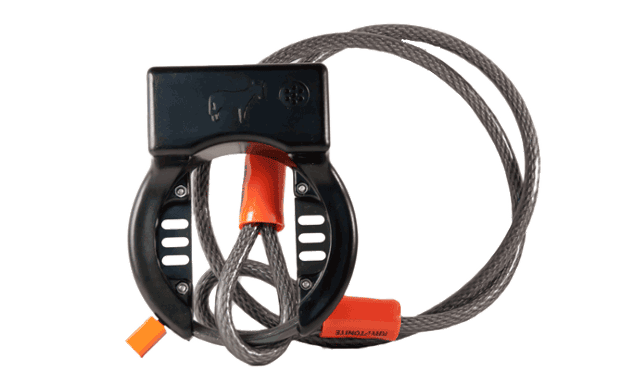One of a child's first milestones is when he or she can walk without help. For many (and, I assume, for everyone reading this blog), a subsequent milestone is riding a bicycle without anyone or anything to aid with balance.
For even the most agile of kids, learning to ride a bike involves a fall or two, and some bumps and bruises. Kids recover from such things quickly; indeed, most forget the pain of those experiences.
When you get to a certain age, shall we say, wounds don't heal as quickly as they did when you were young. (That is one reason why I gave up mountain biking in my mid-40s.) The good news is that your sense of balance is almost certainly better than it was when you were a toddler, and your muscles and reflexes are conditioned in ways they weren't when you were a babe.
Still, it's hard for me to imagine what it's like to learn how to ride a bike at age 53. It's especially difficult for me to envision a novitiate of that age learning to ride in the sorts of clothing "proper" ladies were expected to wear in public in 1892, not to mention on the kinds of bikes that were ridden at that time.
However, there is one woman who managed to do just what I've described. She says that it took her three months of practicing fifteen minutes a day, and during that time, she took only one fall.
If you think that the woman I'm describing had a very determined will, you'd be right. Those of you who've done a bit of reading in women's history--or about one of the most infamous periods of American history--know who she is: Frances Willard.
To say she's one of the most interesting and enigmatic figures in history would be an understatement. She's sometimes credited as a founder of feminism--at least in its earliest iteration--in this country. In a sense, that's true: She believed that it was not only a woman's right, but also her destiny, to have equal citizenship with her husband.
Notice that I wrote "her husband" and not "a man." You see, she believed that a woman's duty was still mainly domestic and that her work should be focused on the education of her children and the emotional and spiritual support of her husband.
Because she believed that women had to "temper" their men, at the same time she was crusading for women's suffrage and other rights, she was a leader in a movement that would lead to the greatest failure in American law and social policy (aside, perhaps, from the War on Drugs). That, of course, was the Eighteenth Amendment of the US Constitution, which was repealed by the Twenty-First Amendment thirteen years later. It's more commonly known as Prohibition, and it was the culminating achievement of the Women's Christian Temperance Union, of which Willard was a leader.
Her almost-schizophrenic ideas about women's rights seems to have been an all-too-logical result of her own experience. Growing up in rural Wisconsin, she raised livestock, chopped wood, broke horses and did all of the work men did in that environment--until she turned sixteen.
The notion of Sweet Sixteen in the 1850's was to give a girl who just turned that age her first corset, hoopskirt and high heels. In other words, she got the privileges of restricted breathing and hobbled walking. She described the sadness she felt over being forced into the prescribed role for a Proper Young Victorian Lady, but somehow she managed to break off an engagement and never be married.

One might think that anyone who could choose to live a life independent of the expectations of her place and time, and to help found two of America's most significant social movements (as misguided as one of them was), would have felt at least some degree of confidence about herself and her place in the world. However, as she says in "Wheel of Fortune", her mother's death exacerbated the strains she was already feeling about her exhausting schedule of researching, writing, traveling, teaching and speaking--not to mention the conflict between her struggle for her own, and women's, independence and her struggle to live, to the degree she could, according to the expectations of her place and time.
It was while facing such a predicament that she realized the "conquest" of the bicycle by someone like her, "who had so many comrades in the white-ribbon army" would be "influential."
She exhorted those "comrades" and other women: "Go thou and do likewise."
For even the most agile of kids, learning to ride a bike involves a fall or two, and some bumps and bruises. Kids recover from such things quickly; indeed, most forget the pain of those experiences.
When you get to a certain age, shall we say, wounds don't heal as quickly as they did when you were young. (That is one reason why I gave up mountain biking in my mid-40s.) The good news is that your sense of balance is almost certainly better than it was when you were a toddler, and your muscles and reflexes are conditioned in ways they weren't when you were a babe.
Still, it's hard for me to imagine what it's like to learn how to ride a bike at age 53. It's especially difficult for me to envision a novitiate of that age learning to ride in the sorts of clothing "proper" ladies were expected to wear in public in 1892, not to mention on the kinds of bikes that were ridden at that time.
However, there is one woman who managed to do just what I've described. She says that it took her three months of practicing fifteen minutes a day, and during that time, she took only one fall.
If you think that the woman I'm describing had a very determined will, you'd be right. Those of you who've done a bit of reading in women's history--or about one of the most infamous periods of American history--know who she is: Frances Willard.
To say she's one of the most interesting and enigmatic figures in history would be an understatement. She's sometimes credited as a founder of feminism--at least in its earliest iteration--in this country. In a sense, that's true: She believed that it was not only a woman's right, but also her destiny, to have equal citizenship with her husband.
Notice that I wrote "her husband" and not "a man." You see, she believed that a woman's duty was still mainly domestic and that her work should be focused on the education of her children and the emotional and spiritual support of her husband.
Because she believed that women had to "temper" their men, at the same time she was crusading for women's suffrage and other rights, she was a leader in a movement that would lead to the greatest failure in American law and social policy (aside, perhaps, from the War on Drugs). That, of course, was the Eighteenth Amendment of the US Constitution, which was repealed by the Twenty-First Amendment thirteen years later. It's more commonly known as Prohibition, and it was the culminating achievement of the Women's Christian Temperance Union, of which Willard was a leader.
Her almost-schizophrenic ideas about women's rights seems to have been an all-too-logical result of her own experience. Growing up in rural Wisconsin, she raised livestock, chopped wood, broke horses and did all of the work men did in that environment--until she turned sixteen.
The notion of Sweet Sixteen in the 1850's was to give a girl who just turned that age her first corset, hoopskirt and high heels. In other words, she got the privileges of restricted breathing and hobbled walking. She described the sadness she felt over being forced into the prescribed role for a Proper Young Victorian Lady, but somehow she managed to break off an engagement and never be married.
One might think that anyone who could choose to live a life independent of the expectations of her place and time, and to help found two of America's most significant social movements (as misguided as one of them was), would have felt at least some degree of confidence about herself and her place in the world. However, as she says in "Wheel of Fortune", her mother's death exacerbated the strains she was already feeling about her exhausting schedule of researching, writing, traveling, teaching and speaking--not to mention the conflict between her struggle for her own, and women's, independence and her struggle to live, to the degree she could, according to the expectations of her place and time.
It was while facing such a predicament that she realized the "conquest" of the bicycle by someone like her, "who had so many comrades in the white-ribbon army" would be "influential."
She exhorted those "comrades" and other women: "Go thou and do likewise."



